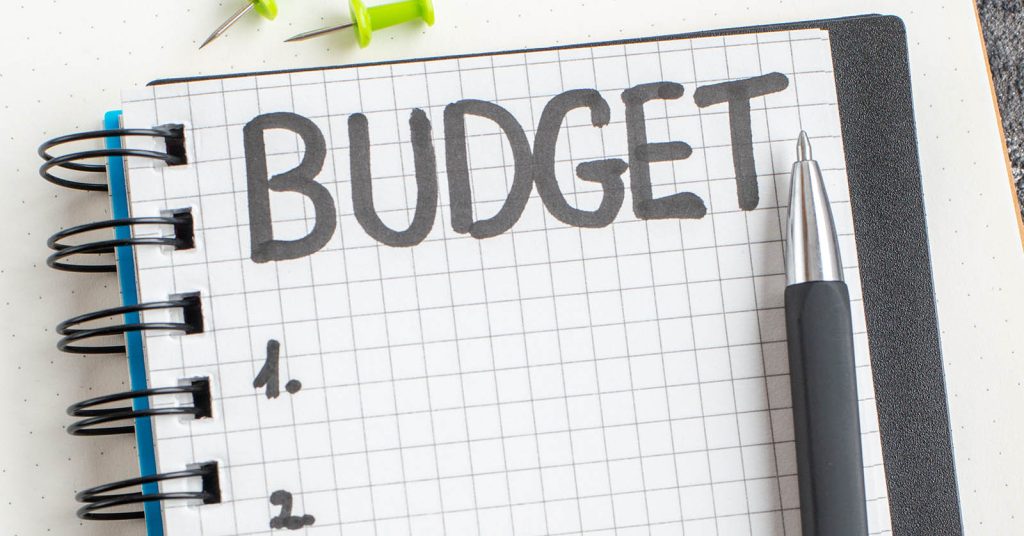Back-to-school season has quietly become a “mini holiday” for retailers — and a budget trap for families. Supplies lists keep growing, kids want specific brands, and tech is now treated as essential instead of “nice-to-have.” Without a plan, it’s easy to overspend, swipe a card, and deal with the regret later. The good news: a few structured steps around lists, timing, and priorities can shrink the bill without shortchanging your kid.
This guide walks you through a practical, low-stress system built on real numbers, credible data, and safeguards against debt. You’ll see what to buy when, how to push back on padded lists, and how to use school and community resources most families never claim.
Key Takeaways
- Design your list before you shop — match school requirements with what you already own to avoid duplicate buys.
- Timing matters — essentials early, flex items during tax-free holidays and clearance.
- Cap the total — set a per-child budget and pay in cash or debit to avoid lingering card balances.
- Use programs & swaps — free/reduced meals, supply drives, and secondhand options cut real costs.
Why Back-to-School Costs Feel So High Now
Back-to-school spending has climbed steadily over the last decade, driven by tech, brand pressure, and more “required” items on supply lists. In recent surveys from the National Retail Federation, many U.S. K–12 families report spending several hundred dollars per child when you include supplies, clothing, shoes, and electronics — and college families often spend even more. The exact numbers shift year by year, but the direction is clear: up.
Families also feel squeezed by timing. Many expenses hit at once: school fees, sports, supplies, devices, transportation, and lunch money. When this stacks on top of regular bills, the default solution becomes credit cards — which is where a short season turns into long-term interest.
Common pain points:
- Last-minute shopping that forces full-price buys.
- “Optional” requirements that don’t feel optional in practice.
- Duplicate purchases because nobody checked what was left from last year.
- Unplanned tech like headphones, calculators, or Chromebooks.
The fix is not extreme couponing. It’s using a structured, boring, repeatable process that turns back-to-school from chaos into a planned, cash-flow-friendly project.
Step 1: Build a Realistic Back-to-School Budget
Start with the number, not the cart. A clear ceiling keeps every decision grounded.
First, list your likely categories. For a K–12 student, common buckets are: classroom supplies, backpack & lunch gear, clothing & shoes, technology, and fees & activities. For college, layer in dorm or apartment setup, books, and transportation.
Next, pull last year’s numbers if you have them. Even a rough total from bank or card statements gives you a baseline. If this is your first time tracking, start conservative. For example, you might cap:
- $75–$125 for core supplies per child (varies by grade and school expectations).
- $75–$150 for clothing and shoes (prioritize fits-now and dress code basics).
- Tech only if truly required or replacing something broken or obsolete.
Then apply one simple rule: the budget is per child, not per trip. If your cap is $250 for everything, every “can we add this?” has to live inside that number.
Finally, decide how you’ll pay. Debit, cash envelopes, or a credit card that you already know you can pay in full from checking. If the only way to “afford” your list is to carry a balance, the list needs to shrink — not your grocery budget.
Step 2: Make Smarter Lists (By School, Child & Category)
Now you turn a vague idea (“we need stuff”) into a precise, defensible list. This is where you stop overspending before you ever see a sale sign.
Use three layers:
- School list: Download the official list from your school or district website. Highlight items truly required vs. “nice to have.”
- Home inventory: Empty last year’s backpacks, drawers, and bins. Cross off anything you already have: scissors, rulers, pencil boxes, unused notebooks.
- Per-child list: For each child, create a short, final list that includes only what’s missing.
When in doubt, challenge “extras.” Do you need brand-name tissues? A separate set of supplies for home? Three new hoodies when two still fit? Often you’re responding to social pressure, not real requirements.
To simplify decisions, group items into:
- Must-buy-before-day-1: notebooks, pens, pencils, basic folders, required calculators if confirmed.
- Buy-after-you-see-the-syllabus: specialized binders, lab supplies, some apps or software.
- Wait-and-see: trendy items, classroom decor, bulk extras.
Step 3: Perfect Your Timing (When to Buy What)
Good timing is a free discount. Retailers follow predictable promo cycles; your job is to align essentials with those windows and avoid panic buys.
| Timing | What to Buy | Why It Works |
|---|---|---|
| Prime July–early August | Core supplies, backpacks, basic sneakers | Strong competition and doorbusters on staples. |
| State tax-free holidays (where available) | Supplies, select clothing, sometimes computers | Legal sales tax savings; verify rules & price caps. |
| First 1–2 weeks of school | Only items confirmed by teachers | Avoid buying “extras” that end up unused. |
| Post-Labor Day clearance | Spare notebooks, basics for rest of year | Stock up cheap for mid-year refills. |
Tech is its own category. Avoid impulse “back-to-school” laptop or tablet deals without checking actual requirements, warranty terms, and long-term durability. Sometimes, using an existing device or a school-loaner program beats buying new.
For clothing, buy what your kid needs for the first 4–6 weeks: dress-code essentials, one pair of solid shoes, and must-have sports items. Seasonal clothes and extras can wait for better pricing later in the fall.
Step 4: Use Smarter Shopping Tactics (Not Extreme Couponing)
Once your list and timing are set, shopping becomes execution — not exploration. A few disciplined moves go further than chasing every promo.
- Compare unit prices on bulk items and multi-packs, especially if you’re buying for multiple kids or splitting with another family.
- Stick to store brands for basics like folders, paper, glue sticks, and pencils unless a teacher specifies otherwise.
- Use one or two trusted apps for circulars, cash back, or price matching; don’t juggle ten tools.
- Avoid buy-now-pay-later for routine supplies. These are short-term loans; missed payments can trigger fees or credit issues.
For online orders, shop only via secure sites (https, recognizable retailers), beware fake “too good” electronics deals, and watch for junk add-ons (extended warranties on $15 items, unnecessary protection plans).
Step 5: Protect Your Cash Flow (and Avoid Debt Hangovers)
The goal isn’t just “get supplies.” It’s “get supplies without wrecking September.” That means smoothing costs and using support that already exists.
Key protections:
- Sinking fund: Set aside a small amount each month year-round for school costs.
- Free & reduced-price meals: If eligible under USDA income guidelines, apply through your district; it can free up meaningful monthly cash for other essentials. Always check current rules and forms each year.
- Community help: Look for local backpack drives, teacher wishlists, and nonprofit programs — especially for high-cost items like calculators or headphones.
- One card rule (if using credit): Put all school spending on one card you can pay off in full with your existing cash. If the math doesn’t work, scale back.
Back-to-School Money Moves That Pay All Year
Once you’ve survived this season with a clearer plan, you can turn it into a permanent win instead of a one-time rescue mission.
Consider locking in a few habits:
- Year-round school fund: Keep the same monthly transfer going for field trips, sports fees, and replacements.
- Annual declutter day: At year-end, collect unused supplies into one bin so you know exactly what you have next summer.
- Needs-vs-wants talks with kids: Use school shopping to teach trade-offs, limits, and comparison shopping.
- Shared family calendar: Track due dates for fees, picture day, team gear, and club payments to avoid last-minute scrambles.
These are small systems, but they build what matters most: predictability. Instead of treating back-to-school as a surprise storm, you treat it like a scheduled bill you’re already prepared for.
Frequently Asked Questions (FAQs)
How much should I budget per child for back-to-school?
There’s no single right number, but many families land in the few-hundred-dollars range for supplies, clothes, and extras combined. Start with what you can afford without debt, then divide into categories. Use last year’s spending and your school’s list as guardrails, and adjust if the total forces you to cut essentials elsewhere.
Is it okay to skip items or buy cheaper versions than the list suggests?
Often yes. Teachers generally care more that students have functional supplies than specific brands. Prioritize required items, choose store brands where allowed, and email the teacher if cost is a concern. In many districts, schools or PTAs can quietly help cover gaps.
When are back-to-school sales actually worth it?
The best deals usually show up from mid-July through early August and during state tax-free holidays (where offered). Use those windows for staples you know you’ll need. For non-essentials and extra clothes, waiting for post-Labor Day clearance often saves more than chasing every early promotion.
Sources
- National Retail Federation — Back-to-school & back-to-college spending trends and averages
- Consumer Financial Protection Bureau — Guides on budgeting, using credit wisely, and planning predictable expenses
- Federal Trade Commission — Advice on safe online shopping, avoiding scams, and recognizing fake deals
- USDA Food and Nutrition Service — National School Lunch Program and School Breakfast Program eligibility and benefits
- IRS — Current rules on education-related credits, deductions, and dependent rules (verify annually for updates)









